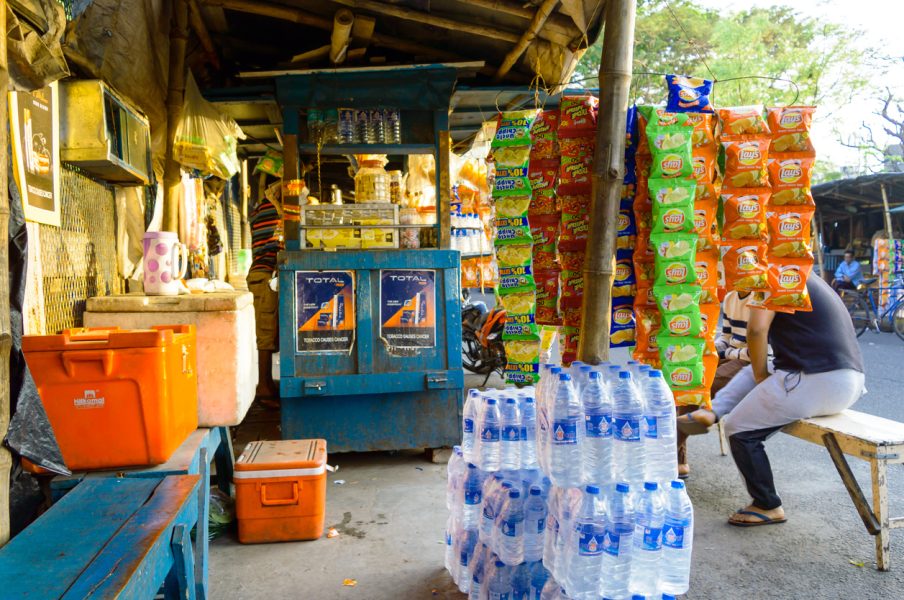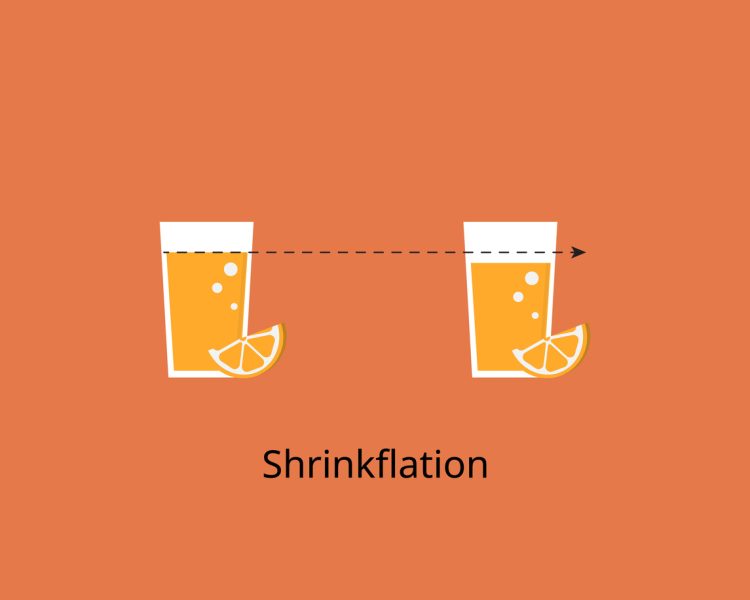
As inflation spikes to 8-year high, Indians see package 'shrinkflation'
Downtrading is happening across the board; even in urban India, it's happening across product portfolios, be it shampoo, hair oil, or oral car

Rising inflation in India is pinching pockets and it is changing the habits of both companies and consumers. In April, retail inflation soared to an eight-year high of 7.79%. In March, inflation based on the Consumer Price Index (CPI) was 6.95%.
As inflation surges, India has moved towards small packs or low unit packs (LUPs), be it cookies, chips, or other products. Any packet ranging from ₹1 to ₹20 falls into the LUP category.
Also read: India wants WTO to play its role in containing global inflation
According to a report, Parle and Britannia said that the small packs account for 40-50% of their sales. These packs are driving their sales in rural markets; however, the trend has caught up in urban pockets as well.
“Downtrading is happening across the board. Even in urban India, we are finding downtrading across our portfolio – be it shampoo, hair oil, or oral care. Our price points of ₹1, ₹5, ₹10, and even ₹20 are faring significantly better than larger packs with an exception of modern trade and e-commerce,” said Mohit Malhotra, CEO, Dabur India.
Packaged consumer goods categories such as beverages, confectionaries, commodities, homecare, personal care, and packaged food have seen higher sales of LUPs as compared to medium and high unit packs in rural and urban areas in recent months, data from retail intelligence platform Bizom revealed, a Moneycontrol report said.
Also read: Costlier fuel, food drive retail inflation to 8-year high of 7.79% in April
The data showed that beverages saw a 3.1% growth in the sales of low unit packs in the urban areas in the fourth quarter as compared to the first quarter of FY22.
Medium packs, similarly, witnessed 3.1% growth while large packs saw a decline of 6.2%. In rural areas, LUPs in the beverage category grew by 5.5%, while large packs declined by 14.7%, during the above-mentioned period. Home care witnessed a 5.8% and 3.5% increase in the sales of LUPs, in urban and rural areas, respectively, while large pack sales declined by 1.9% in the rural areas, showed Bizom data.
Though small packs have become popular among consumers, the companies are feeling the pinch in manufacturing them due to high costs. For this, they have resorted to “shrinkflation”, a term coined in 2009 by British economist Pippa Malmgren.
What is shrinkflation?

Shrinkflation is the practice of reducing the size of a product while maintaining its sticker price. Raising the price per given amount is a strategy employed by companies, mainly in the food and beverage industries, to stealthily boost profit margins or maintain them in the face of rising input costs, according to Investopedia.
Shrinkflation, combination of the words shrink and inflation, is also referred to as package downsizing in business and academic research. A less common usage of this term may refer to a macroeconomic situation where the economy is contracting while also experiencing a rising price level, it added.
Also read: High oil prices behind inflation in India, monetary tightening needed: IMF
The companies are reducing grammage in small packs while keeping the same price. In the past six months, the maker of popular Parle-G biscuits has indirectly increased prices by 7-8% in packs priced below ₹10 by reducing grammage. The small packs help firms target millions of poor and low-income people who cannot afford to buy larger packets, a Livemint report said.
“Producing smaller packs has become extremely challenging because the yield you get from manufacturing them is not as good. We reduce the weight of the pack till it’s feasible. That’s how we sustain and manage inflation. Above the ₹10 price pack, we tend to take a direct price increase,” Krishnarao Buddha, senior category head at Parle Products, was quoted as saying in the report.
According to him, there is no alternative but to keep selling the ₹5 and ₹10 packs because that’s what consumers want.
Parle biscuit packs priced at ₹5 contribute close to 40-45% of the company’s sales, while ₹10 packs contribute 25-30%, the report added.
“In the next two to three years, the ₹10 pack will be the new ₹5 while the ₹5 pack will diminish slowly and steadily – because it’s not able to satiate consumer demand,” he said.
Britannia Industries too is taking the same route, not increasing the costs of their small packs but reducing grammage. It took a 10% price hike in financial year 2021-22 (FY22) and resorted to reducing pack sizes as an indirect way of increasing prices. In the previous financial year, the ratio of grammage reduction was 65%, which will be higher in FY23. The management said it would hike prices by 10% if the current levels of raw material prices sustain, a report on Business Standard said.
“There have been geopolitical factors which are aggravating the inflation scenario and I don’t think that it’s abating in anyway… Because of our forward commitments, we have been able to control some of our costs, however, the commodities have still witnessed inflation of 17% and 14% for the quarter and full-year respectively,” Varun Berry, managing director of Britannia Industries, told investors in a post-earnings conference call.
Dabur too has reduced the volume on certain products to protect the 1, 5 and 10 rupee “sacred price points,” Chief Executive Officer Mohit Malhotra said, according to a Bloomberg report.
“We will see more inflation in the next two to three quarters… Reducing the volume in certain price-point packs is the only way for us to take price increases,” Ritesh Tiwari, Chief Financial Officer of Hindustan Unilever, was quoted as saying in the report.
Not only India, the US too is hit by shrinkflation after inflation soared to a 40-year high. Domino’s Pizza, Burger King, Subway, and others in the US have reduced their portions.
According to experts downsizing happens during rising inflation. “Downsizing comes in waves, and it tends to happen during times of increased inflation,” said Edgar Dworsky, a consumer rights lawyer that keeps track of downsized products on consumerworld.org. “Bottom lines are being pinched and there are three basic options: raise the price directly, take a little bit out of the product, or reformulate the product with cheaper ingredients.”


